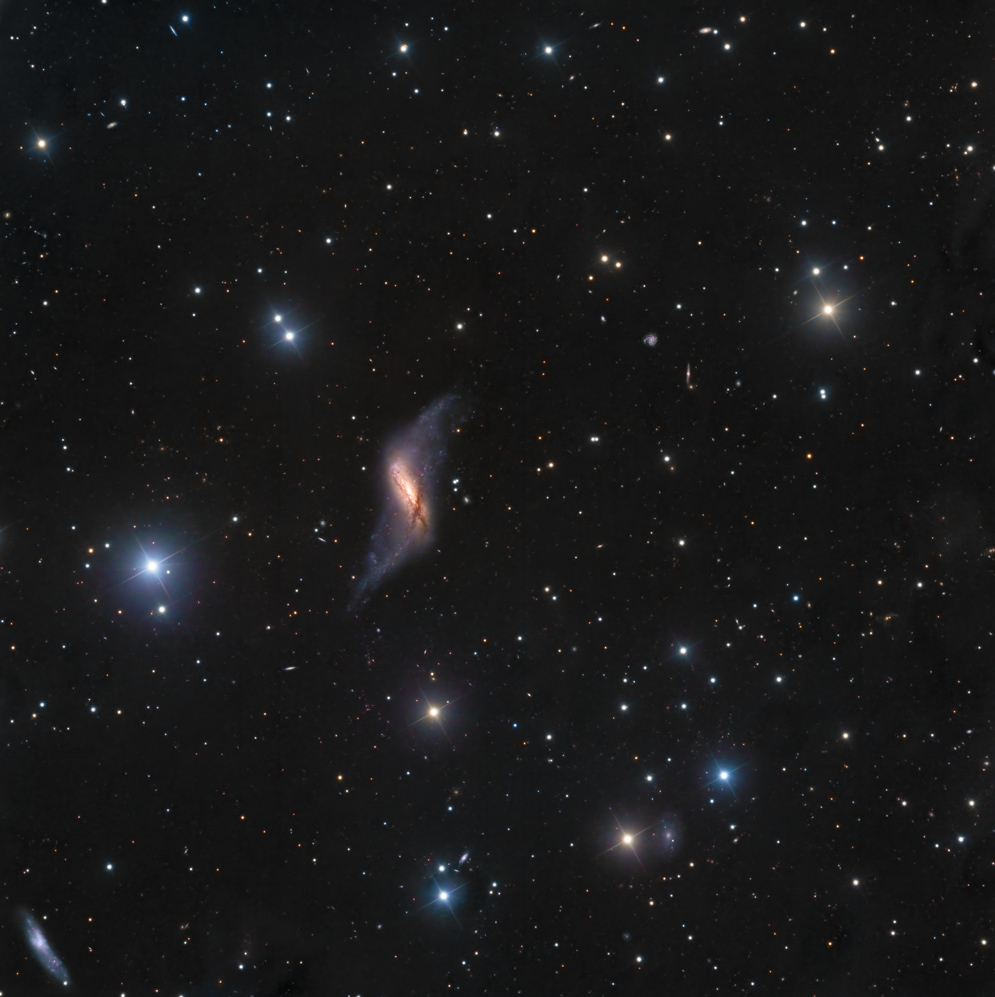

NGC660 is a moderate-sized polar ring
galaxy, about 45 million light years distant. The ring outside the main part of the galaxy is about 50,000 light years across (less than half the diameter of our Milky Way galaxy).
The first polar ring galaxy was not discovered until 1978; it is theorized that these strange objects are the result of a collision between two galaxies,
with the larger capturing the smaller and being re-formed by the gravitation forces.
There is a high level of star-formation taking place in the ring, an expected result of gravitational interaction between galaxies.
As usual, there are a lot of background galaxies in this photo, headlined by IC148 (in the lower left corner of this photo), a small irregular galaxy perhaps 35 million light years distant.
The entire field of the photo is about the same width as a full moon.
Copyright 2021 Mark de Regt